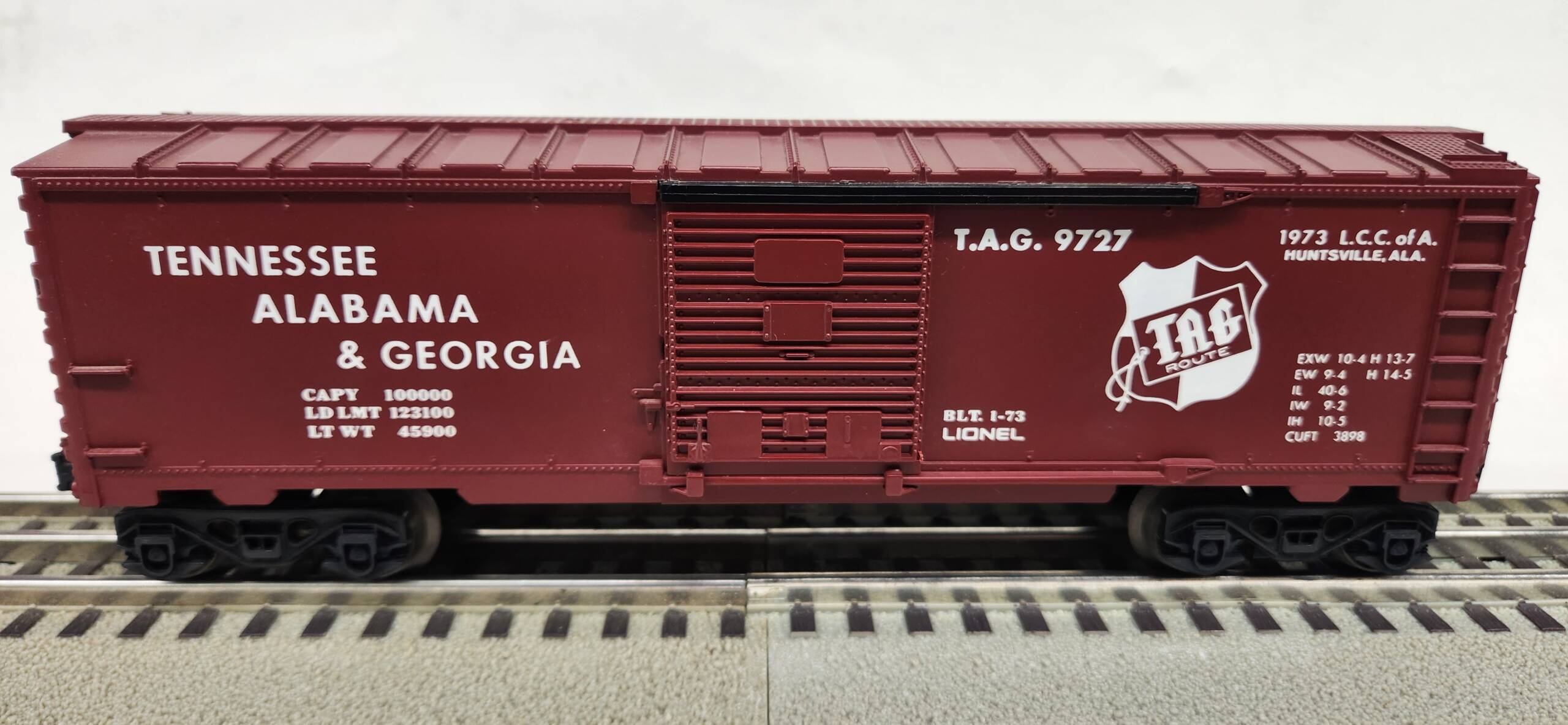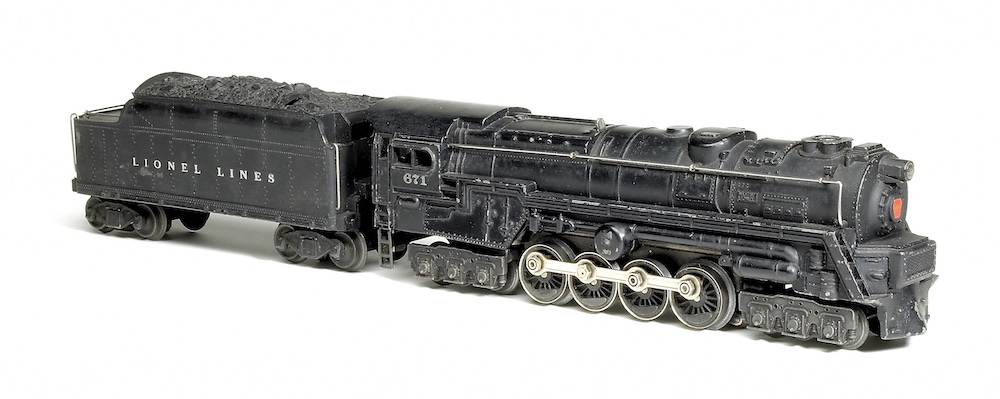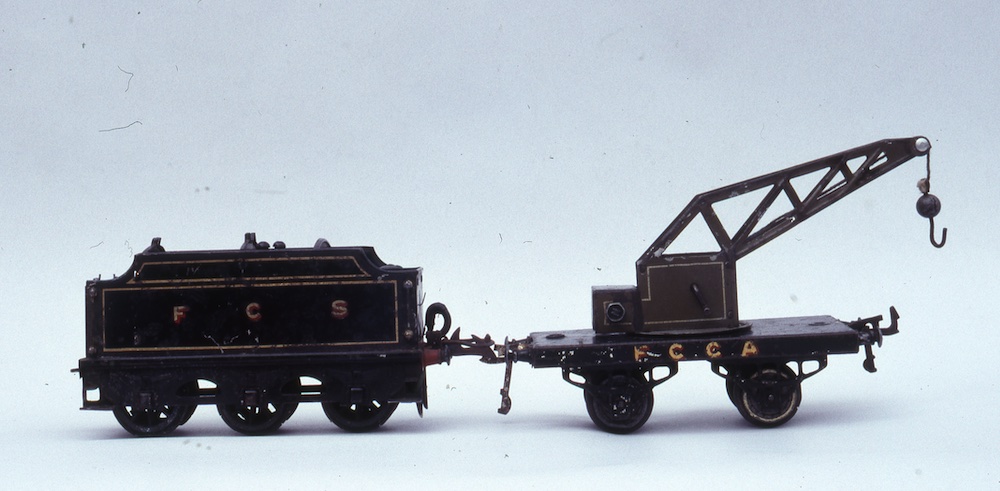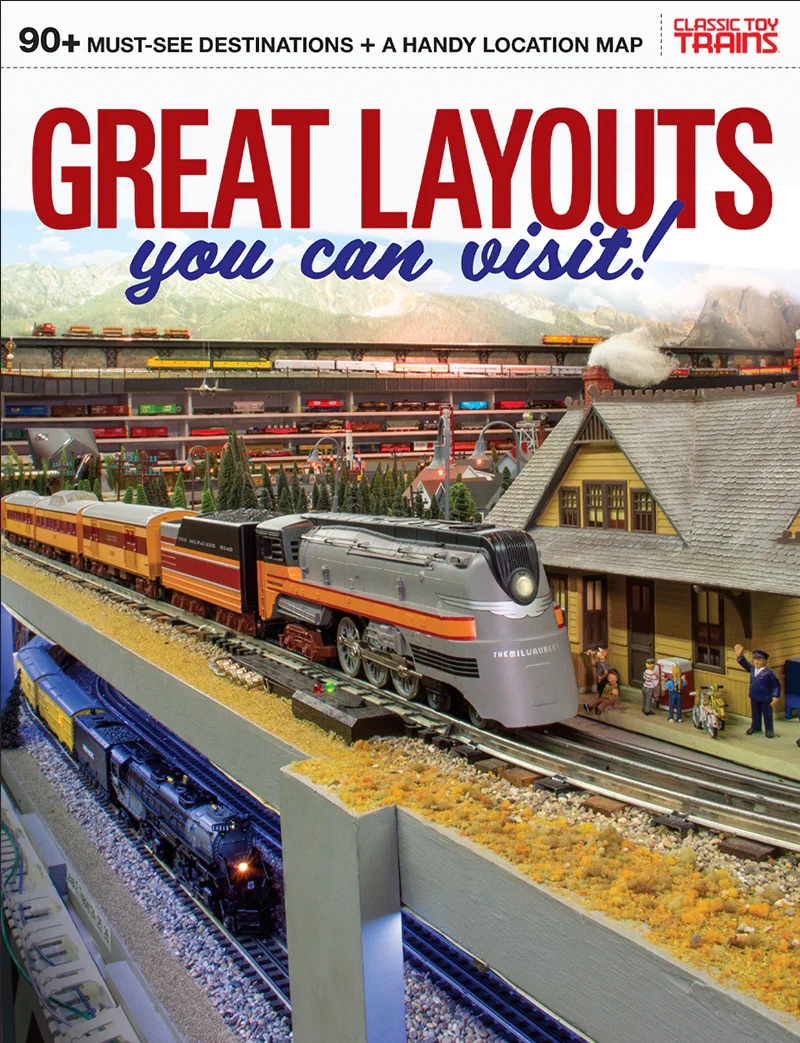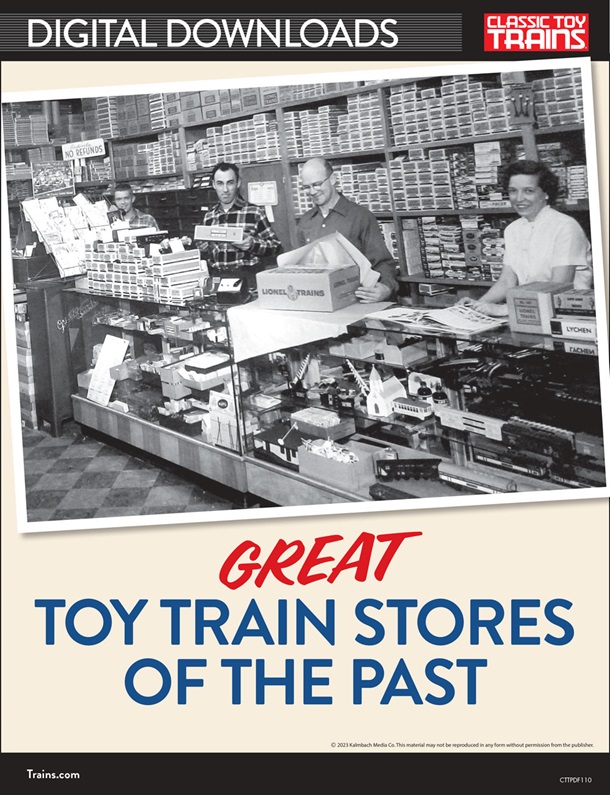Former Editor Neil Besougloff purchased this manuscript in 2002, and wondered why it hadn’t been used. I found the answer while scanning the slides–the photo quality is not great. While the photos are not usable in print, I hope they find some value in this online version. I’ve also learned that author Peter J. Corrigan died in 2023. —Ed.
In 1900, William F. Hafner formed the Hafner Company as the Toy Auto Co. but in 1902 changed the name to the Wm. F. Hafner Company. The earliest toys produced were clockwork automobiles, trucks, and doll swings. In 1905 Hafner produced their first clockwork train, a cast iron steam engine.
Hafner joined forces with Edwin-Metzel, a hardware company, for train production in 1907. Selling toy trains proved so successful that by 1910 Edwin-Metzel decided to devote their manufacturing exclusively to mechanical toy trains, and they changed their name to American Flyer.
But in 1914, due to a financial disagreement, William Hafner ended his partnership with American Flyer and formed the Hafner Manufacturing Company. He then produced a line of cast iron steam locomotives and lithographed passenger cars prized by collectors today for their colorfully detailed railroad heralds, trim, and color schemes. (For an in-depth look at the history of Hafner trains, I recommend Greenberg’s Guide to Early American Toy Trains, published in 1993.)
My interest in Hafner is for their 1010 series and lithographed steam locomotives, and freight and passenger cars produced from the mid 1930s on.
Hafner No. 1010 steam locomotives

When I first took note of these hardy clockwork steam locomotives, the black with aluminum trim and red with silver trim versions seemed to be the standard. I learned from Greenberg’s Guide to Early American Toy Trains that these locomotives came in an array of colors. As I searched through countless online auctions and train show tables and purchased numerous sets and individual pieces, I noticed fascinating variations.
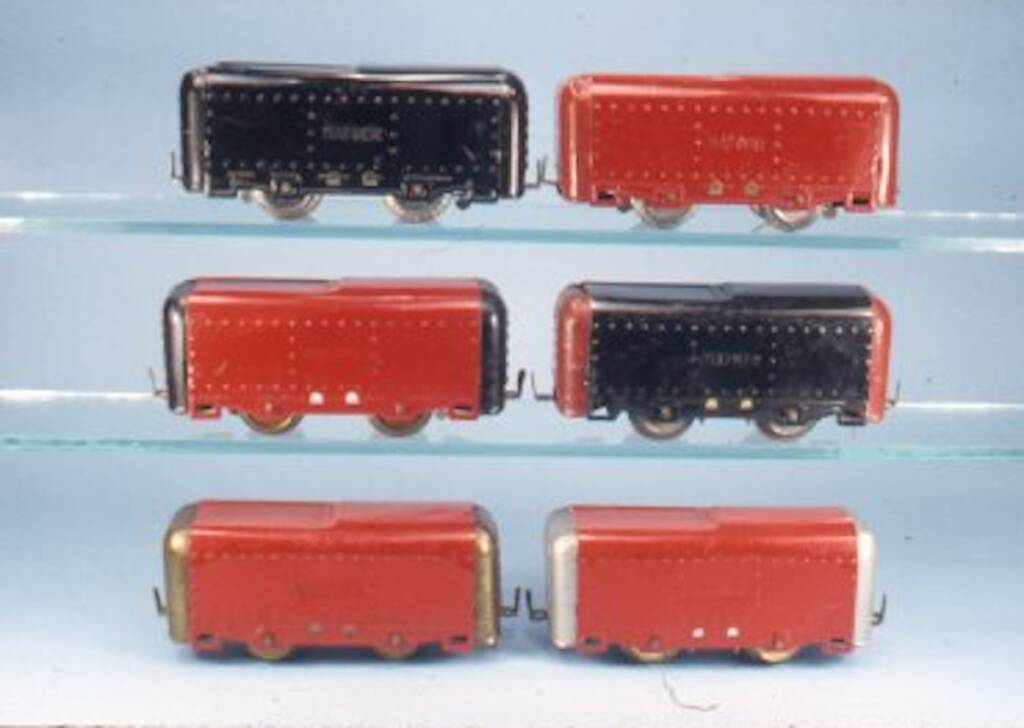
The No. 1010 steam locomotive had four production variations. The first and most common had sideboards and a cowl on top of the boiler; the second was identical to the first except for an embossed ridge running the length of each sideboard. The third had the cowl omitted and smokestacks, domes, and bell atop the boiler, and the fourth had the cowl and short sideboards. There were other variations that occurred during assembly. Sideboards and cowls sometimes matched but just as often they didn’t.
The second style of No. 1010 tender had “Hafner,” “1010,” rivets, and ladders lithographed on the body. These tenders are quite striking and can be found in passenger as well as freight sets.
Lithographed steam locomotives
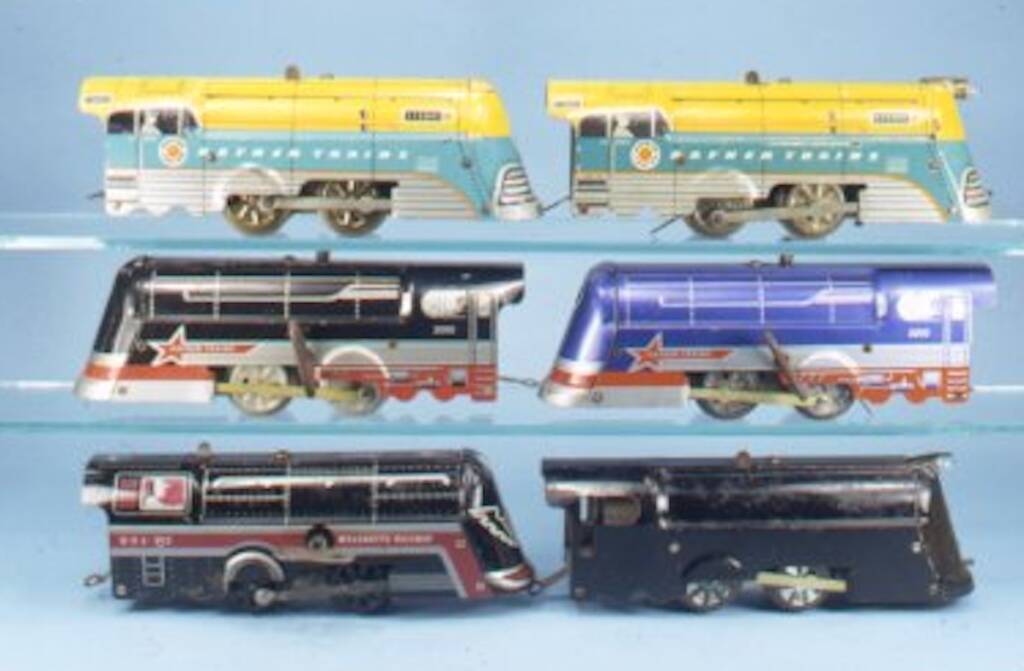
Hafner began producing lithographed streamline steam locomotives in the late 1940s. There was the No. 2000 produced in blue and black, and the yellow No. 115041, offered with or without a battery operated headlight. There was also an all-black painted version with cab windows and doors punched with a battery operated headlight, a rather scarce variation. All came with matching tenders.
Late production freight and passenger cars
The freight and passenger cars of this period of Hafner production are characterized by their rounded bodies and ends, first with the 7 1/2” passenger and freight cars and then with the shorter 5 ½” freight cars.
Well known tinplate maker Louis Marx’s lithographed freight cars, 6” boxcars, and passenger cars were formed from one sheet bent to form the body and attached to a separate frame. In contrast, Hafner car bodies consisted of three pieces–a lithographed roof, sides, and frame bent and fastened by tabs to two rounded end pieces with a cross brace piece fastened beneath the car. Some collectors consider the longer freight cars out of proportion and flimsy, but the later short freight cars look more realistically proportioned.
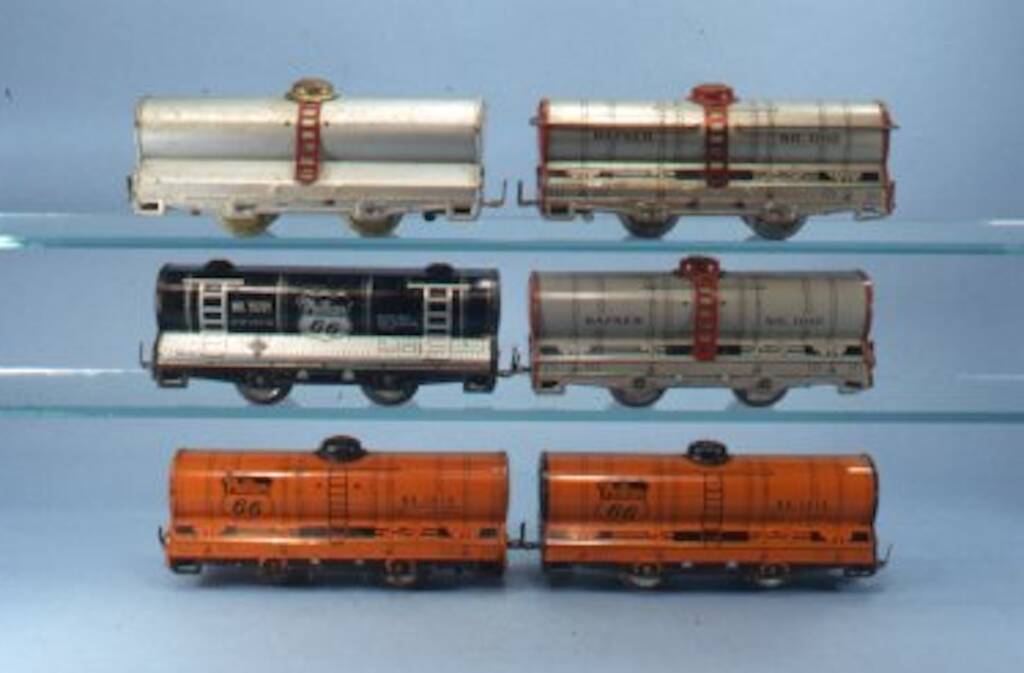
Hafner eventually discontinued this construction style for its last series of freight cars, changing to a car with a separate frame and body, similar to Marx’s assembly methods. Hafner manufactured a wide variety of freight car types, including boxcars, stock cars, tank cars, gondolas, hoppers, and cabooses, in a wide array of colors.
Assembly variations far outnumber the few production variations. A persistent collector may be lucky enough to find one of the rarer cars produced during this period.
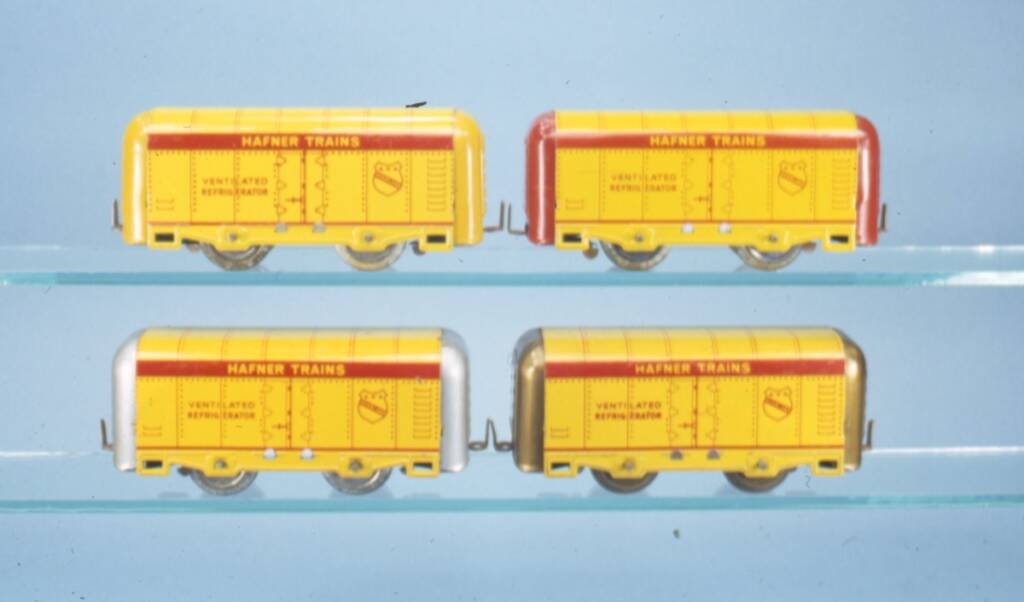
Four Haftner Ventilated Refrigerator Cars with different colored ends. Peter J. Corrigan photo
The Hafner streamlined style passenger cars are not as highly desired as the early passenger cars, but collectors still eagerly seek them. The coaches came in two styles, cars with nine windows, and cars with six windows. There were many color combinations offered, and with a matching No. 1010 or 2000 locomotive and tender, these streamlined passenger sets are among the most collectible Hafner produced from this period. Some of these cars were featured with Union Pacific-style M10000 locomotives with both articulated style couplers and regular Hafner hook couplers.
Production oddities
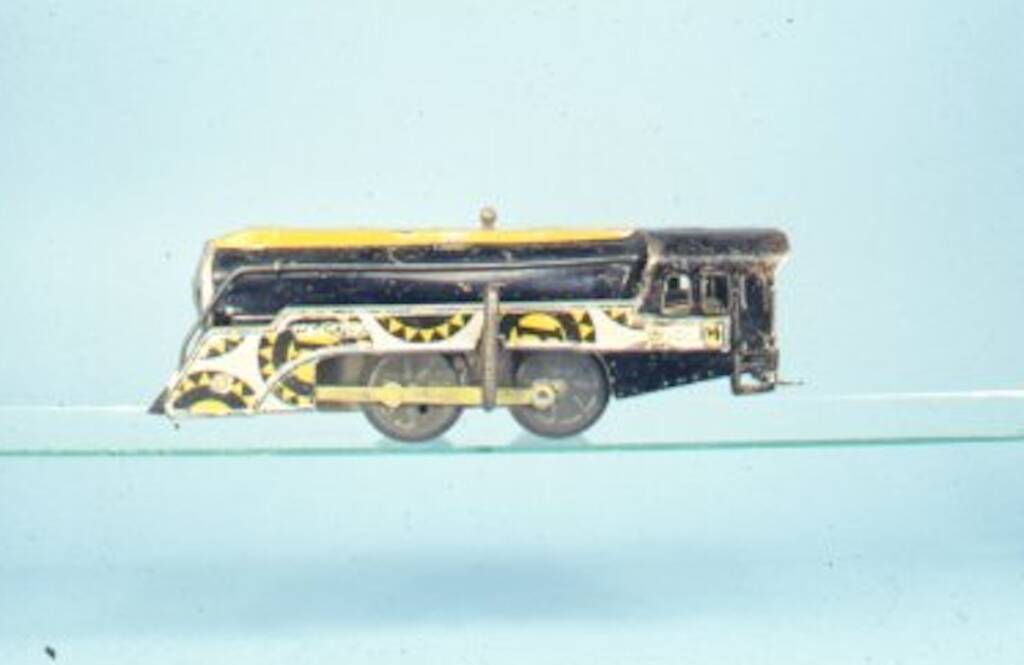
As I began collecting Hafner in earnest, I found odd production pieces, and some fascinating factory errors that made me wonder how they ever made it past quality control. I go out of my way to hunt such pieces down.
Recycling tin
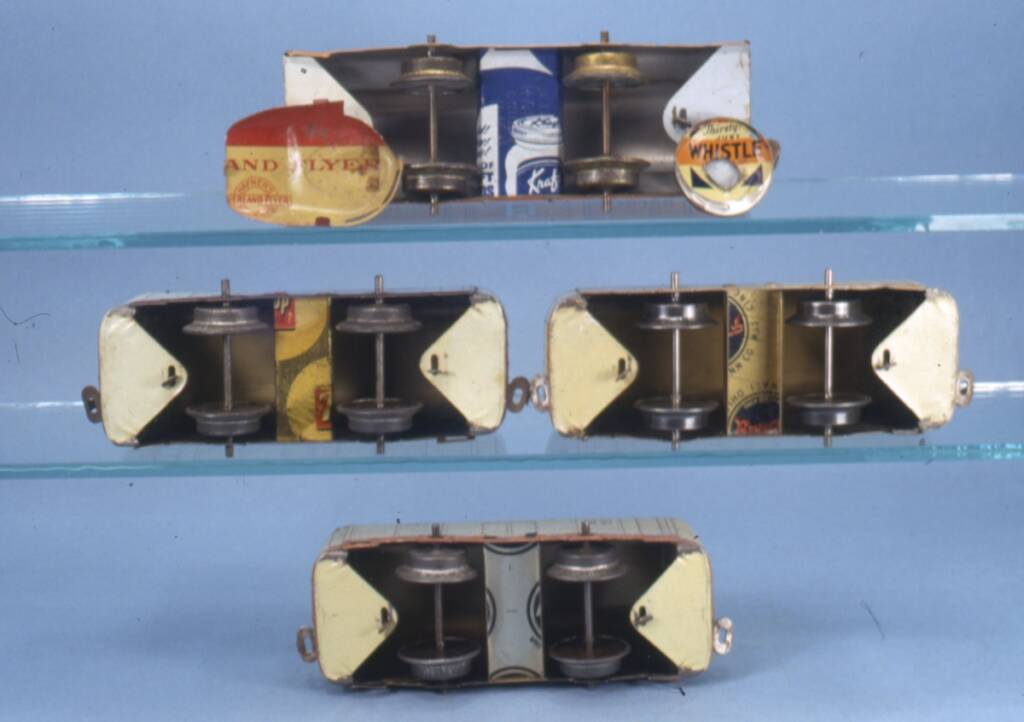
Hafner was a pioneer in “recycling” tin for use in their toy train production, and evidence of this is usually found in the crossbraces beneath the freight cars. I have found them lettered for Kraft Mustard, Coca-Cola, and 7 Up. The most infamous of these is the “Pfeiffer’s Chicken” black No. 1010 steam locomotive.

Hafner also recycled their own tin (something Louis Marx would later do on a fairly regular basis) as seen in the photo of the undersides of the freight cars, with an early Hafner “Overland Flyer” logo on the bottom of an M10000 cab roof. Hafner also used such tin on their windup track.
Hafner/Wyandotte
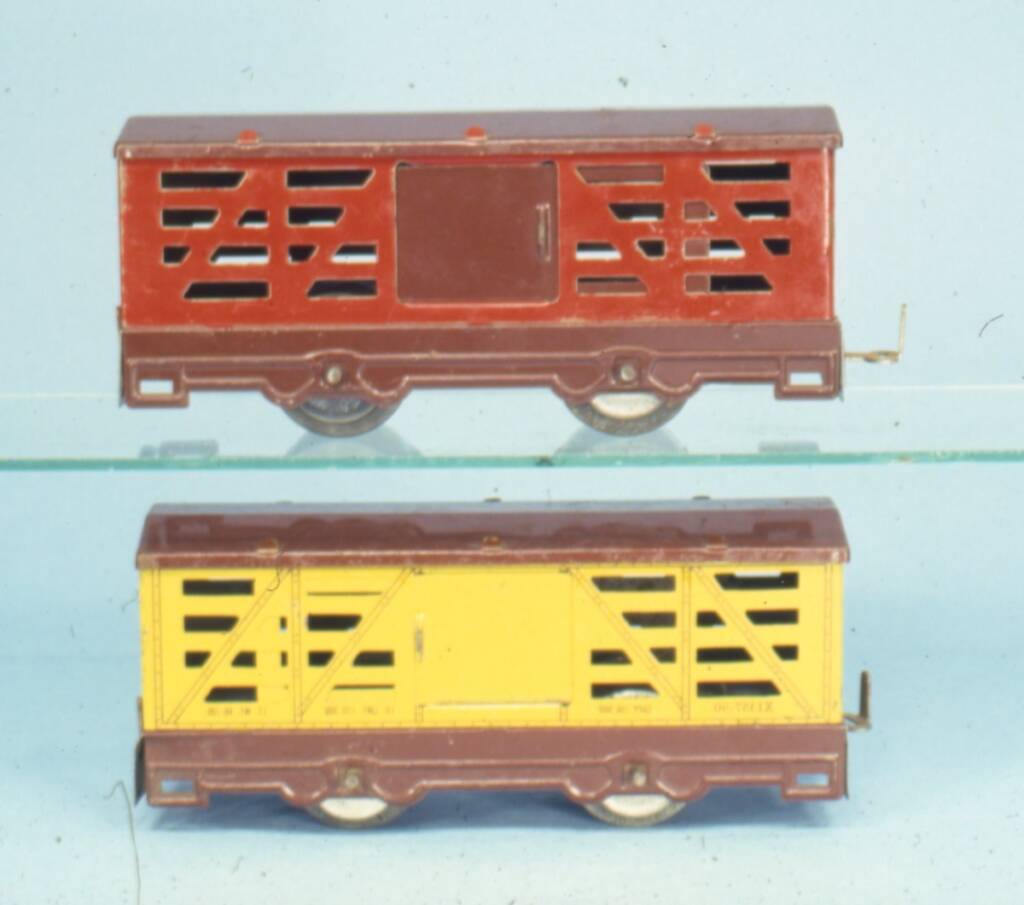
In 1951, Wyandotte Toys acquired rights to Hafner trains and produced them until 1956. The locomotives and freight cars remained mostly unchanged, with only a Wyandotte logo added along with the existing Hafner markings. Wyandotte eventually produced a new windup motor with slip-on key, replaced the metal drive wheels with plastic ones, and omitted the bell and clapper. These new motors are much less reliable than their Hafner counterparts. They also produced a new steam locomotive that retained the Hafner streamlined style body but used the black, red, and silver lithographed engine. A matching tender was produced, one variation having a bell and clapper beneath it.
Plastimarx
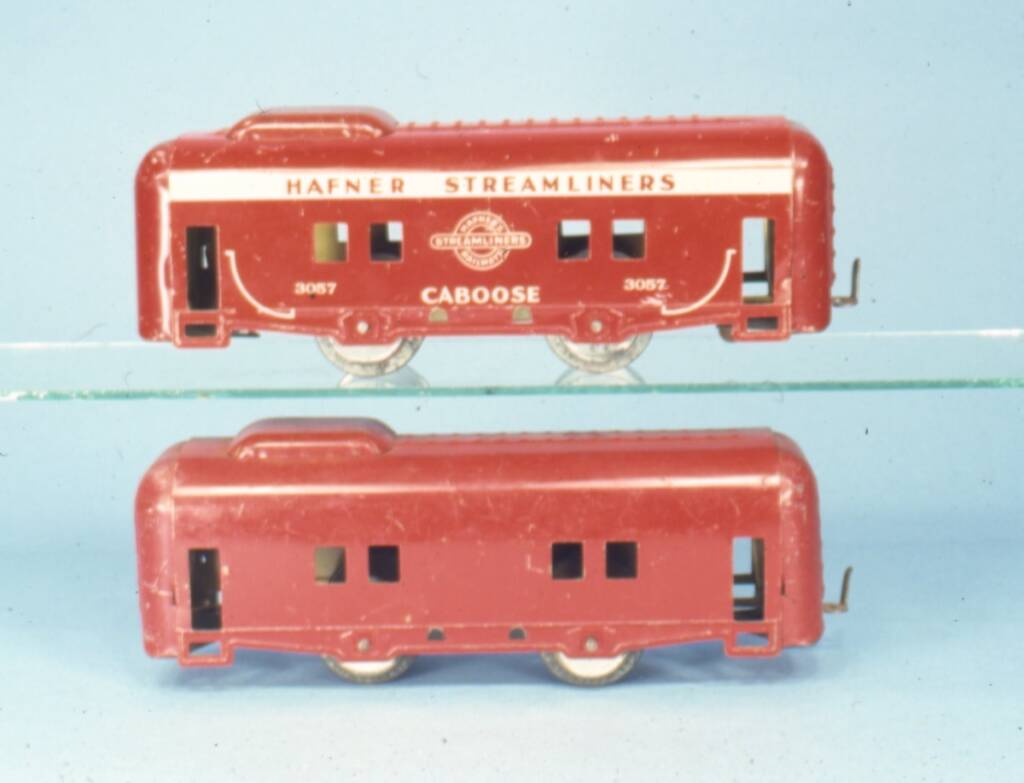
In 1956 Wyandotte filed for bankruptcy and the Louis Marx Company bought all of the Hafner/Wyandotte tooling and dies. Louis Marx shipped them–and some older Marx tooling–to Mexico to avoid future competition to his lithographed train line in the United States. Marx then produced a line of lithographed mechanical trains in Mexico under the Plastimarx name. During the 1980s, Plastimarx production was moved to the United States. The date of its closure is unknown, but is estimated around 1991.






